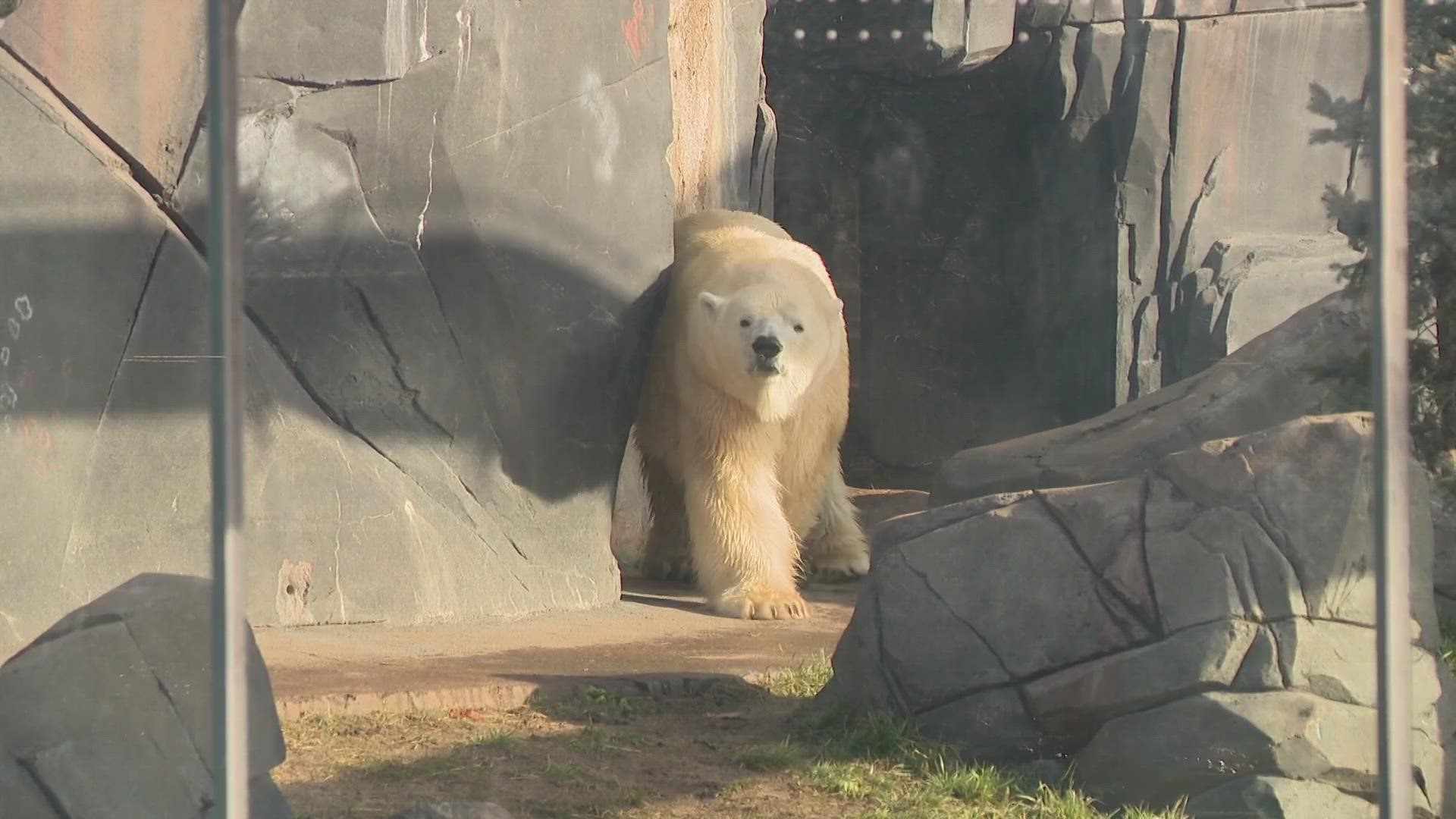ST. LOUIS — International Polar Bear Day, Feb. 27, is a day to honor the magnificent species and bring awareness to its threatened status in the wild.
The polar bear, according to the World Wildlife Fund, is the largest bear in the world and the Arctic's top predator. It spends most of its life in, around or on the Arctic Ocean and its ice.
Known for their white coat that helps them camouflage into their icy and snowy habitat and provides protection against water and frigid temperatures, polar bears are a powerful and majestic species made for hunting.
They can reach up to 9 feet in length, and their paws are the size of a dinner plate to help them trek across the ice and deep snow. Female bears can weigh up to 700 pounds, while males can reach 1,300 pounds, according to the WWF.
They are fast runners and talented swimmers, with a top speed of 25 mph on land and the ability to keep a pace of 6 mph in the water.
Their diet primarily consists of seals because the bears need large amounts of fat to survive.
Kali the polar bear


St. Louis is home to its own polar bear, 10-year-old Kali.
A resident of the Saint Louis Zoo's McDonnell Polar Bear Point, Kali was brought to the zoo in 2015 after being found orphaned in northern Alaska.
Pronounced like "Kully," Kali was named by the school children in Point Lay, Alaska, where he came from, and the zoo still holds video conferences with the kids each year so they can see how Kali has grown.
Kali's grown a lot since he moved to St. Louis, now ranging between 1,200 and 1,400 pounds and standing 9 feet tall.
The staff at the Saint Louis Zoo makes an effort to give Kali a wide range of fish, meat, vegetables and fruit to help stimulate his hunting skills. In total, he eats about 20 to 30 pounds of food a day.
The Saint Louis Zoo hopes to bring a female polar bear to breed with Kali in the not-so-distant future to help combat the declining polar bear population in the U.S., Kevin Beckmann Curator of Carnivores at the zoo Steve Bircher said.
A threatened species


Polar bears, according to the WWF, are a vulnerable species with only 22,000-31,000 bears left in the world. In the U.S., there are only about 50.
"Polar bears are designed to live and survive with ice," Bircher said. "Today, since there are much larger open spans of ocean, for polar bears to get from dry land to ice, they might have to swim several hundred miles. And there are some polar bears that are not capable of swimming those great distances to get the seals that live on the ice floes."
While Polar bears are excellent swimmers, they might not be fast enough to catch the seals that live in the open sea. Instead, they have to find breathing holes in the drifting ice where seals will emerge. The bears sit by the holes and speedily grab the seals when they come out of the holes.
According to the Saint Louis Zoo, scientists are particularly concerned for the polar bear species because they have low reproductive rates and may be less able to adapt to environmental changes than other bears due to being highly specialized for aquatic life in the Arctic.
"There are simple things we can do on a daily basis that can help reduce the carbon footprint that may be affecting the warming in those areas," Bircher said. "We can easily raise our temperature a degree or two in the summertime, we can lower our temperature a degree or two in our homes. We can turn off lights, which helps conserve electricity. These are all really simple things we can do to hopefully help the environment, which will help polar bears."
To watch 5 On Your Side broadcasts or reports 24/7, 5 On Your Side is always streaming on 5+. Download for free on Roku or Amazon Fire TV.

